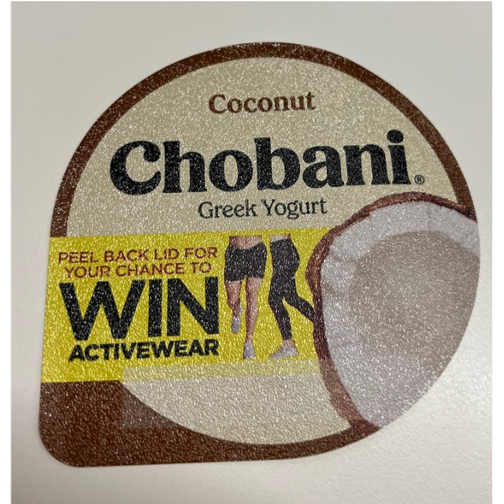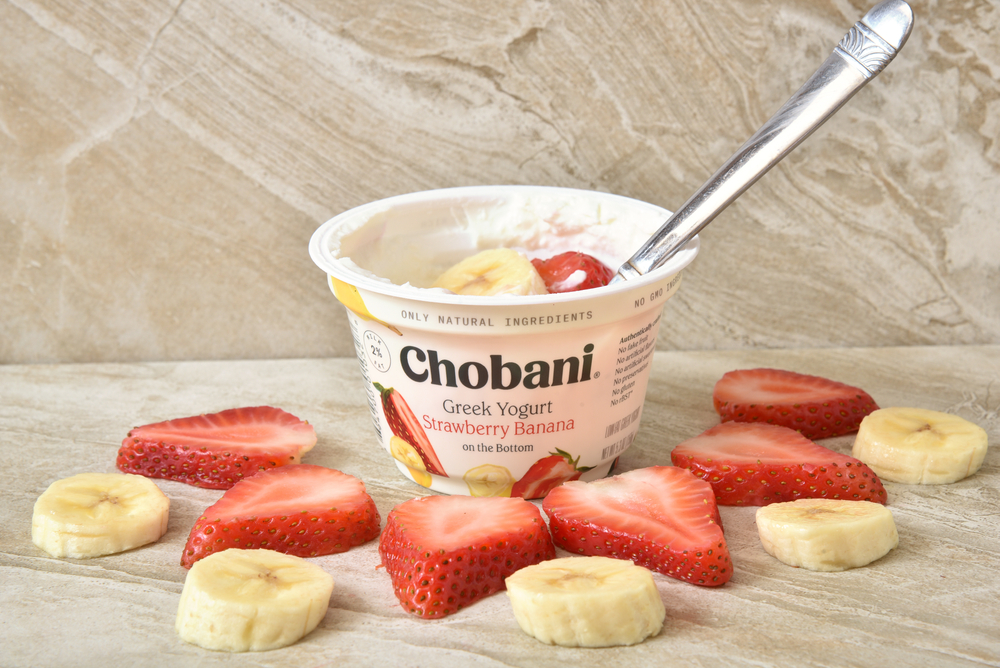Chobani and Jet partner on innovative on-pack promo

Chobani, in collaboration with Jet Technologies, has designed and implemented a marketing campaign featuring a competition code uniquely printed on the food contact side of a yoghurt tub’s inner foil seal.
For such an initiative, new design and testing protocols were established and followed to ensure the printed chemical was safe and compliant with food safety regulations.
The campaign gave consumers the opportunity to win a range of Chobani branded activewear via an on-pack promotion, which was brought to life with a unique shopper marketing activation at select independent retailers in NSW, SA and Victoria.
The packaging design was fit-for-purpose in all intended areas, guaranteeing the product’s freshness and protecting it from any ink contamination, while promoting Chobani’s branding and showcasing a unique competition for consumers to participate in.
“The challenge with this project was to print a unique code and competition entry information on the inside of the foil lid, as this would present the simplest method for consumers to participate in the competition,” said Daniel Malki, general manager at Jet Technologies.
“Printing on the direct food-contact side of the lid is a complex process, due to the concerns regarding ink migration, and so Chobani’s focus was to deliver the printed foils in a manner that met competition requirements, as well as the highest consumer safety standards.”
To protect and preserve the product contents, the foil lid attached to the top of the yoghurt tub was printed in three different printing technologies, including inks and lacquers that were specially selected to meet the EuPIA standards, Exclusion Policy for Printing Inks and Related Materials; and the EuPIA-guideline, Guideline on Printing Inks applied to Food Contact Materials.
These special inks and lacquers were layered to form the product’s lidding packaging to ensure the protection of the product’s contents. Printed samples were then laboratory tested to confirm the results, ensuring the print was safe to come into contact with food.
The specialist printing technologies used to produce this lidding, being the two side sof the foil lids (the inside food contact side and the outer visually appealing side), had to be produced across two different production sites.
The large-scale and multi-dimensional marketing project was developed in partnership with Chobani, Jet Technologies and Constantia.
“We worked with Jet Technologies to develop a best-in-class solution that did not compromise food safety,” said Chobani.
“Printing the code on the underside of the foil delivered a better consumer experience, giving the consumer the opportunity to instantly claim their prize, rather than alternative burdensome processes such as submitting a purchase receipt.
“There’s not a lot of space on the foil of our yoghurt pots, so it was quite challenging to fit the relevant competition information. We partnered with Jet Technologies to ensure that the Chobani branding and unique look and feel were not impacted.”
To protect the food product from the inks and lacquers printed on the bottom side of the foil, different printing techniques and materials were applied.
Firstly, an over lacquer, printed inks, print primer, aluminium foil layer, heat-seal lacquer, more printing inks, and finally, more heat-seal lacquer, were layered to form the products lidding packaging.
During the construction process, Jet Technologies printed the bottom side in a rotogravure printing press using special inks at 500m/min, to print a QR code, as well as the competition entry information.
Also on the bottom side, digital inkjet printing heads were mounted onto the rotogravure press to print the unique code in a single pass. Lacquers were then printed to encase the printed inks in manner that was determined by a laboratory as direct food-contact safe. On the top side, the foil lidding was printed in flexography using EuPIA-suitable inks at 250m/min.
Likewise, several migration tests were performed to confirm the result, from the print outputs from all three print methods – rotogravure, inkjet and flexography.
The migration tests confirmed there would be no transfer either onto other foils (indirect transfer), or into the food itself (direct transfer).

